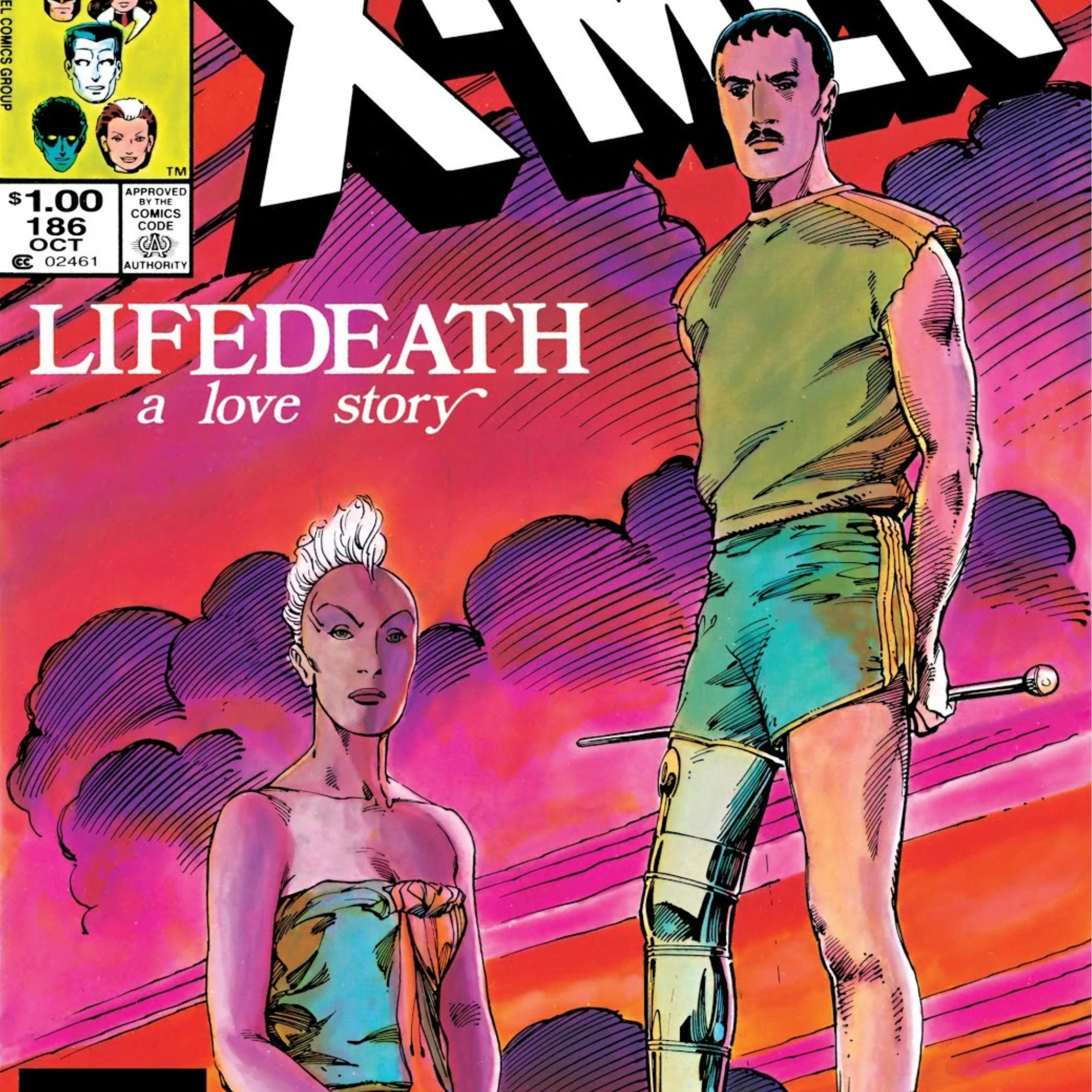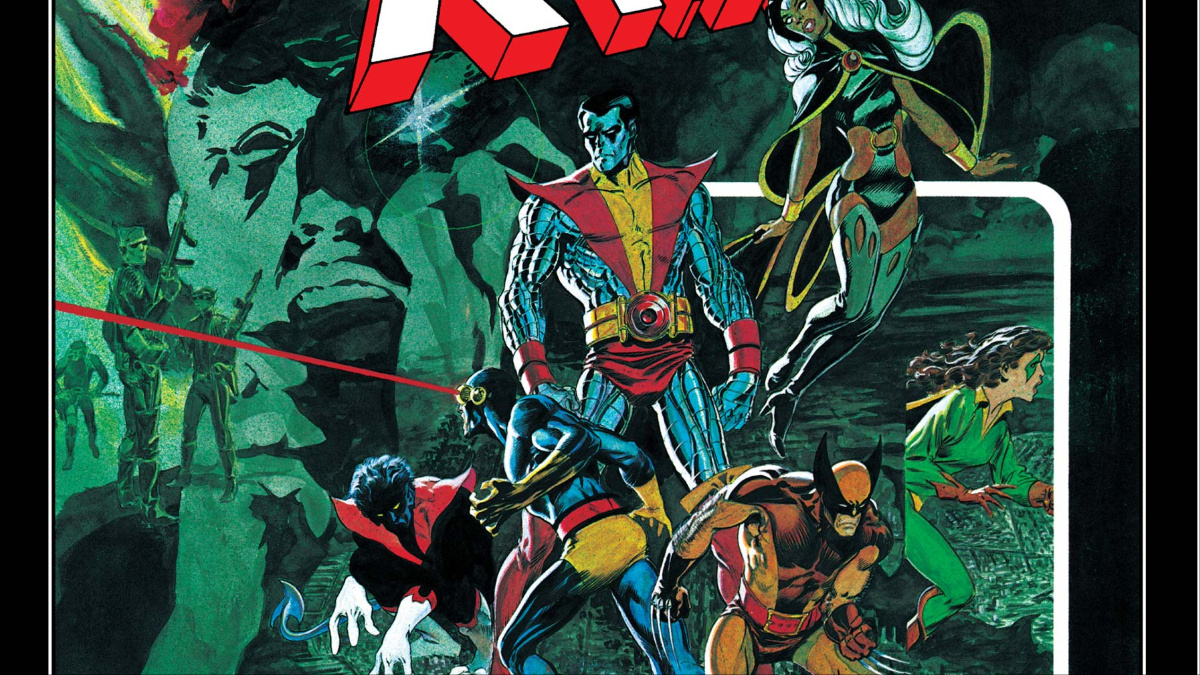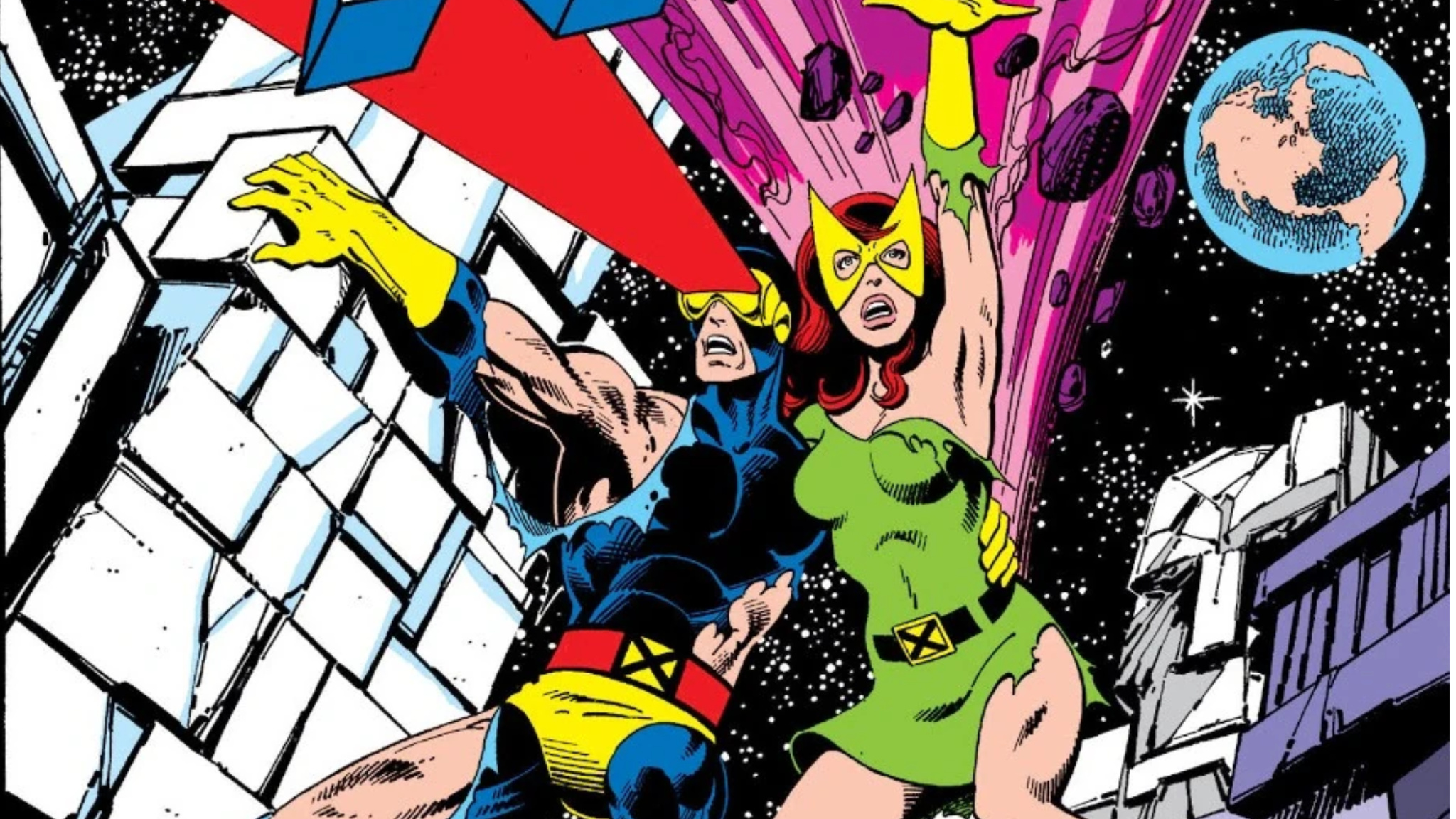
1974 marked a significant shift for the X-Men, as Giant-Size X-Men #1 sparked renewed enthusiasm for the team. The reins were handed to writer Chris Claremont, who would later oversee X-Men (later known as Uncanny X-Men). Alongside creators like Dave Cockrum and John Byrne, Claremont turned the X-Men into the most sought-after comics team in the industry during the 1980s. This decade saw the X-Men rise to become a dominant force within the comic book industry, consistently topping sales charts and reshaping Marvel Comics forever. The Avengers and Fantastic Four once held the top spots, but the X-Men took over and reigned supreme. However, it wasn’t just the comics’ sales that were impressive. The stories of the 1980s X-Men remain some of the greatest comics ever created.
1980s X-Men comic books laid a foundation for greatness that propelled the team forward into the ’90s. A close examination of these comics reveals consistently high quality content that was appreciated by readers. Although the X-Men have had impressive decades since then, many believe that the 1980s X-Men comics are unmatched in their brilliance. This collection of ten X-Men classics from the ’80s represents the cream of the crop, and it played a significant role in making the X-Men Marvel’s most enduringly popular team for decades.
10) Uncanny X-Men #200

Chris Claremont significantly transformed the X-Men in various aspects, but his most notable achievement lay in shaping Magneto. Originally, Magneto in the Silver Age was much like Doctor Doom with mutant abilities, planning grandiose schemes and frequently bursting into dramatic outbursts. However, it was Claremont who introduced Magneto’s tragic background of the Holocaust and later worked to bridge the gap between the X-Men and Magneto. This culminated in Uncanny X-Men #200, where Magneto stood trial for his actions as a mutant terrorist at the United Nations. Despite some underhanded maneuvers by the Fenris Twins, using the trial as a pretext for an attack, Uncanny X-Men #200 marked a pivotal moment in X-Men history. Following this event, Magneto took over the Mansion from Professor Xavier and grew closer to the X-Men than ever before.
9) Uncanny X-Men #201

Leaving Earth and Magneto assuming Xavier’s role in “Uncanny X-Men” #200 was a significant event, but it wasn’t the only major transformation for the team over the following months. Storm challenged Cyclops for leadership of the X-Men, which might have seemed like an effortless victory even for Storm from the ’80s. However, there was a twist – Storm had lost her powers. This resulted in a fierce battle between them, proving to fans that Storm could lead the X-Men without relying on her abilities. This issue demonstrated to readers that Storm was capable of leading the X-Men, paving the way for exceptional X-Men narratives.
8) Uncanny X-Men #172-173

In the ’70s and ’80s, it was undeniably Wolverine who stole the spotlight among the X-Men, a remarkable feat given the popularity of the entire team. Chris Claremont developed Wolverine significantly during the initial nine years of the series, introducing his romantic relationship with Mariko Yoshida and building anticipation for their wedding through issues like “Wolverine” (Vol. 1) #1-4. The wedding itself was depicted in “Uncanny X-Men” #172-173, only to be disrupted by Silver Samurai, Viper, and Mastermind. With the X-Men poisoned, Wolverine and Rogue were left as the only fighters. However, Wolverine’s trust in Rogue was strained due to her past actions towards his friend Carol Danvers. These issues are quintessential examples of Claremont’s “Uncanny” series, offering an engaging main storyline, insightful character interplay, and the development of both Wolverine and Rogue. Naturally, the wedding didn’t go as planned due to Mastermind’s interference, but it was just another chapter in the ongoing drama that defined the X-Men in the ’80s.
7) “Mutant Massacre”

The initial significant X-Men collaboration of the ’80s, dubbed “Mutant Massacre”, saw the unification of series such as Uncanny X-Men, New Mutants, and X-Factor, as well as non-X titles including The Mighty Thor, Power Pack, and Daredevil. The narrative centered on the Marauders invading the Morlock Tunnels and brutally attacking disfigured mutants. The X-Men and their allies put forth every effort to rescue as many Morlocks as they could. Key moments for readers included the first major Wolverine/Sabretooth battle, Angel’s crucifixion, and the sowing of seeds that eventually led to the revelation of Mister Sinister. “Mutant Massacre” marked Marvel’s realization of their ability to create expansive multi-part stories around the X-Men, and it remains an exciting journey. With stakes as high as life itself, the story left the X-Men in a rather grim state.
6) Uncanny X-Men #143

Many individuals might include “The Brood Saga” on their list, but if I were to choose between the two, I’d recommend “Uncanny X-Men” #143 for a more compelling tale of an X-Man battling Alien-like monsters. This special Christmas issue finds Kitty Pryde, a young Jewish member of the X-Men, spending the holiday alone at the mansion while her teammates are celebrating. However, tranquility is short-lived as one of the N’Garai, a race of demons with a gateway to their dimension on the X-Mansion grounds, launches an attack. This time, it’s not the modern-day ninja Kitty Pryde who steps up; it’s the thirteen-year-old girl who recently joined the X-Men. The story that unfolds is a captivating tale (with numerous Alien references) that showcases Kitty’s potential as an X-Man. It’s a unique Christmas story, essentially a Halloween tale in disguise.
5) “Inferno”

1) “The Mutant Massacre” marked Marvel’s initial exploration of utilizing the X-Men in a universe-wide crossover event, paving the way for future collaborations. The success of this tale ensured its continuation.
2) In 1989, “Inferno” served as the grand summer crossover event, encompassing titles such as Uncanny X-Men, New Mutants, X-Factor, Excalibur, X-Terminators, Avengers, Daredevil, Power Pack, Cloak and Dagger, Fantastic Four, The Amazing Spider-Man, The Spectacular Spider-Man, Web of Spider-Man, and Damage Control. The narrative revolved around Madelyne Pryor, a Jean Grey clone and Cyclops’s wife, succumbing to years of mistreatment and manipulation by Mister Sinister. United with the denizens of Limbo, Pryor launched an assault on New York City. The X-Men took the lead in this battle, drawing in other city heroes to join the fight.
3) “Inferno” represents the climax of numerous story arcs and offers a vivid portrayal of the X-Men during the Outback Era. Remarkably, this tale continues to resonate even decades later, demonstrating its enduring quality.
4) Uncanny X-Men #186-187

A top 80’s X-Men tales collection wouldn’t be whole without the impactful duo of “Lifedeath” and “Wraithkill,” specifically Uncanny X-Men issues #186-187. In these issues, Storm, who had temporarily lost her mutant abilities due to a device known as the Neutralizer, seeks help from Forge. Their bond deepens in this story, a development that predates the plot, until Storm discovers the heartbreaking truth that it was Forge who designed the weapon. The Dire Wraiths’ assault forces them into an alliance for survival, intensifying their relationship to unprecedented levels. This tale is one of Storm’s most significant stories, exploring love’s profound impact on individuals. It’s essential reading for anyone aiming to grasp the essence of the X-Men in the 80’s; Chris Claremont and his collaborators crafted captivating character-centric stories that appealed to both casual newsstand readers and devoted long-term fans following the X-Men.
3) “Days of Future Past”

The storyline ‘Days of Future Past’ is a crucial piece in the X-Men lore as well as the broader history of superhero comics. In this narrative, readers are transported to a dismal future where the Sentinels, machines designed to control mutation, have subdued humanity and eradicated most mutants and superhumans. The surviving humans are imprisoned in concentration camps. To thwart this grim future, the X-Men devise a strategy: sending Kitty Pryde back in time to prevent the assassination of Senator Robert Kelly and the passage of the Mutant Registration Act. ‘Days of Future Past’ introduced dystopian storytelling elements into the X-Men universe and superhero comics, creating an ominous mutant future that seemed almost unavoidable. The success of this tale demonstrated to creators that such stories resonate with fans, leading to the frequent use of ruined futures, often controlled by advanced machinery, in subsequent superhero comic books. This entire concept can be traced back to ‘Days of Future Past’.
2) “God Loves, Man Kills”

The graphic novel “God Loves, Man Kills” was a darker and more mature addition to Marvel’s collection, living up to its reputation for grittier tales. In this story, both the X-Men and Magneto find themselves investigating the murders of mutant children, uncovering Reverend Stryker and the Purifiers as the culprits. This sets the stage for a joint effort against the Purifiers by the two factions. The narrative emphasizes the central civil rights theme of the X-Men, with bigotry and religion’s role in prejudiced beliefs being major themes. “God Loves, Man Kills” was a trailblazing tale that Marvel had not ventured into before; today, it would be considered “woke”. It is a potent story, showcasing the potential of exceptional X-Men narratives.
1) “The Dark Phoenix Saga”

The ‘Dark Phoenix Saga’ stands out as Marvel’s finest story, undeniably making it the most exceptional X-Men series of the ’80s. Chris Claremont, alongside collaborators Dave Cockrum and John Byrne, had been meticulously setting up this narrative since the introduction of the Phoenix Force in issue #101. The climax unfolded when the Hellfire Club managed to seize Jean Grey, and Mastermind’s influence, combined with the weight of her divine power, transformed her into the Dark Phoenix. Essentially, ‘The Dark Phoenix Saga’ is a tragic Greek play featuring the X-Men as protagonists. The team tirelessly endeavors to rescue their comrade, and the heart of this tale lies not in grand actions but in the intense emotional turmoil. This story encapsulates the X-Men at their best, portraying a tightly-knit family battling cosmic forces to save Jean Grey from her own destructive power. It remains consistently captivating, and if you’ve yet to read it, you’re in for a truly enriching experience.
Read More
- Gold Rate Forecast
- PI PREDICTION. PI cryptocurrency
- Masters Toronto 2025: Everything You Need to Know
- WCT PREDICTION. WCT cryptocurrency
- LPT PREDICTION. LPT cryptocurrency
- Guide: 18 PS5, PS4 Games You Should Buy in PS Store’s Extended Play Sale
- Elden Ring Nightreign Recluse guide and abilities explained
- Despite Bitcoin’s $64K surprise, some major concerns persist
- Solo Leveling Arise Tawata Kanae Guide
- Shrek Fans Have Mixed Feelings About New Shrek 5 Character Designs (And There’s A Good Reason)
2025-06-05 19:14